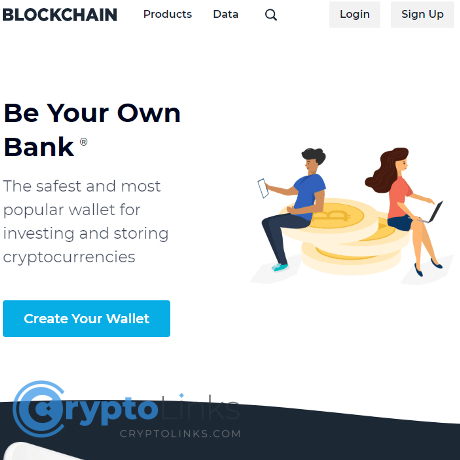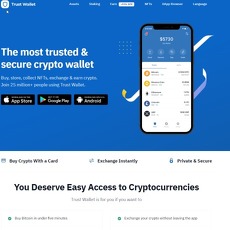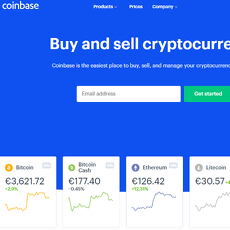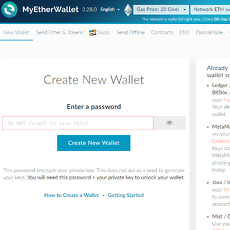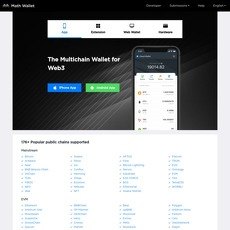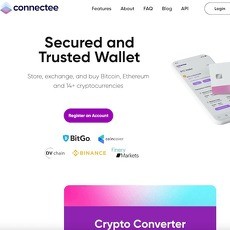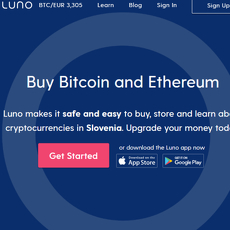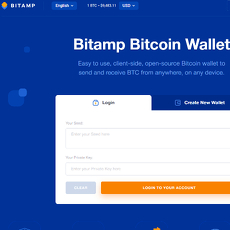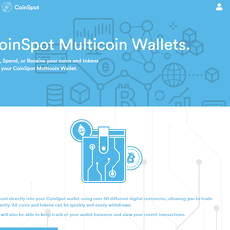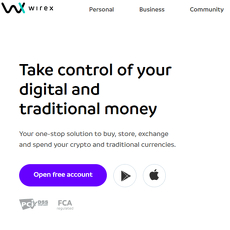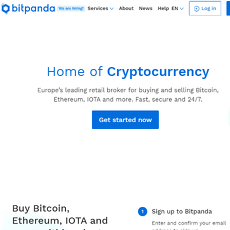Blockchani Wallet Review
Blockchani Wallet
blockchain.info
Blockchain Wallet Review Guide: Everything You Need to Know + FAQ
Ever wondered why picking the right crypto wallet feels way harder than it should be? You’re excited about crypto, but suddenly you’re down the rabbit hole of platforms, private keys, horror stories, and so-called “easy” apps—yet you still can’t figure out which one actually works for normal people who just want a safe, reliable home for their coins.
If that’s you, you’re in the right spot. This guide on Blockchain Wallet is all about honest answers, practical solutions, and actual advice (not just another copy-paste “best wallet” list). Whether you’re a curious beginner or a frustrated veteran looking to stop losing sleep over hacks and confusing apps, let’s cut through the noise and see what Blockchain Wallet truly offers.
The Struggle With Crypto Wallets: Security, Ease, and Trust Issues
Let’s be real: choosing a crypto wallet is usually a pain. You don’t just want promises—you want proof. Who hasn’t come across one (or more) of these headaches?
- Poor security: Hacks and scams have made headlines. According to Atlas VPN, nearly $3.8 billion in crypto was stolen in 2022 alone—most due to wallet weaknesses!
- Complex interfaces: Some wallets look like they were built by programmers for other programmers. If you have to watch three YouTube videos just to send $50, that’s a problem.
- Mysterious fees: Hidden fees sneak up on you, cutting into your balances when you least expect it.
- Trust issues: Can you really trust the platform with your money and your private data?
All the technical jargon and endless “top wallet” lists only make things worse. I get it—I’ve personally tested dozens of wallets, and a lot of them don’t make it easy.
I’ll Give You the Solutions – Simple Answers, Real Advice
Here’s what you’ll get: a clear, trustworthy look at Blockchain Wallet. I’ll walk you through exactly how it works, what’s different about it, and how you can actually get your money out to your bank account (without tearing your hair out).
- How safe is Blockchain Wallet?
- Will it make managing your crypto feel simple—or more confusing?
- Should you worry about losing your coins if something goes wrong?
I’ll break things down, answer the big questions, and share some personal insights from my own research and experience (including a few real-life success—and failure—stories).
Are You Getting Scammed? Protect Yourself First
Let’s get clear about one thing right away: not all wallets are created equal, and not all risks are obvious. Every year, people get burned by phishing links, fake support agents, and wallet imposters that look legit until your funds disappear. I’m here to flag the red lights and share practical security checks so you can use Blockchain Wallet—or any wallet—without constant paranoia.
Think you’re too smart to get scammed? So did 90% of victims—until it happened.
You deserve to feel confident with your crypto, not lost or stressed out. Stick with me and you’ll get the simple instructions, real warnings, and answers you wish someone had given you on day one.
Ready to see if Blockchain Wallet checks all your boxes? Or wondering what actually sets it apart from all those other wallet apps? Let’s start from the top—what is Blockchain Wallet, anyway, and why do so many people swear by it? You’ll find the full scoop in the next section!
What Is Blockchain Wallet?
Picture the wallet you use every day — only this one lives online, and it’s designed for crypto. Blockchain Wallet is a digital wallet that lets you store, send, receive, and manage popular cryptocurrencies through a simple web or mobile app. Created by Blockchain.com, one of the most recognized names in the crypto universe (since way back in 2011!), it’s become a go-to choice for millions who want to keep their crypto safe, but easy to access.
Why has this wallet managed to become such a staple? The short answer is: it’s reliable, easy enough for newcomers, and still packs in what advanced folks need. Millions of users worldwide trust it—not bad for something that’s seen Bitcoin grow from a hobbyist toy to a global headline.
Main Features You Should Know
Let me quickly walk you through the standout perks:
- Multi-currency Support: Bitcoin, Ethereum, Bitcoin Cash, Stellar, and more are all supported in a single app. No need for separate wallets per coin.
- Cross-device Access: Use it on your phone, your laptop, or any browser and pick up right where you left off.
- Intuitive Interface: If you can use online banking, you’ll be comfortable here—clean dashboard, big buttons, and clear instructions.
- Exchange Features: Swap crypto inside the wallet—skip those confusing transfers to exchanges just to make a trade.
- Backup & Recovery: Industry-standard backup phrase (don’t skip this part!) makes sure you can restore your wallet if you ever lose your phone.
- Non-custodial by default: You hold your keys and your coins. Blockchain.com never touches your funds. This is crucial for real ownership—as one survey by Finder.com found, over 50% of new crypto users worry about not being in control of their money.
The feeling when you can check your balance anywhere and not panic about losing control? That’s a seriously underrated benefit.
"In a space where trust is often fragile, giving people real ownership is a game-changer."
How Does It Compare to Other Types of Wallets?
The wallet world is packed with options—not all are the same, and each has a trade-off:
- Online Wallets: Super convenient, just like Blockchain Wallet. They work from anywhere, no extra gadgets needed. The risk? Being online means they’re always a target, so good security is a must.
- Hardware Wallets: Like the Ledger Nano or Trezor—these look like USB sticks and keep your crypto offline. Extremely secure against hacks, but lose it and forget your backup? It’s gone for good.
- Paper Wallets: Literally your keys written on paper. Old-school and basically unhackable online, but lose the paper or let it get wet… well, that's your “oh no” moment.
Blockchain Wallet lives right in the sweet spot—easy, flexible, works most places, and you keep your keys. For most users, it’s the most practical blend of security and everyday convenience.
Pros and Cons at a Glance
- ✔ Pros:
- Supports major and trending cryptocurrencies
- Free to use (except for network fees)
- User controls private keys
- Easy to buy, send, and swap crypto
- Web and mobile access
- ✘ Cons:
- Hot wallets are never 100% immune to attacks
- Lack of multi-signature for everyday users
- Not as private as a full node or hardware wallet
- If you lose your backup, support can’t help recover it
No tool is perfect, but for many, the trade-offs make Blockchain Wallet a favorite. Still, there’s always more to a wallet than its basic features—how do you actually get started and keep your crypto locked down? That’s where things get real.
Curious about what to do first, or how to make sure nobody but you can touch your coins? The next part is where the rubber meets the road — you’ll want to keep reading!
How to Get Started With Blockchain Wallet
Let’s be honest—setting up a crypto wallet shouldn’t make you want to launch your laptop out the window. But that first step can feel intimidating if you’re worried about messing up. I’ve set up dozens myself, and honestly, Blockchain Wallet is probably one of the easiest out there. Whether you’re brand new or you’ve opened a few wallets before, the start is smoother than you might expect.
“The journey of a thousand bitcoins begins with a single click.”
Creating Your First Wallet
You’ll be relieved to hear: there’s no hidden trick or complicated verification loop.
- Go to Blockchain Wallet. Make sure you're on the official site—double-check the URL if needed. Hackers love fake sites.
- Hit the “Sign Up” button. All you need is a valid email and a strong password. The stronger you make your password, the less you’ll stress later.
- Confirm your email. In just a minute, you’ll get a verification link. One click, and your account is live.
Seriously, you can do it from a laptop at home or your phone while waiting in line for coffee (yep, their app is solid). I even had a friend open his first wallet during halftime at a soccer game—it’s that quick.
Securing Your Account: Basic Steps
Before you celebrate with some new crypto, you must lock it down. This isn’t optional—studies show the majority of wallet hacks happen simply because users skip basic security.
- Enable Two-Factor Authentication (2FA). It adds another wall between your funds and anyone trying to get in. Authenticator apps like Google Authenticator are my go-to. SMS is better than nothing, but apps are safer.
- Set up your Recovery Phrase. This is a list of 12 random words that unlock your wallet. Write it down and store it somewhere truly safe. Do not save it on your phone or in email. I know someone who lost thousands because they thought a screenshot was smart—don’t make the same mistake!
- Double-check account settings. Turn on notifications for activity. This way, you’ll spot anything fishy fast.
Make these a habit, and your night’s sleep will thank you.
Navigating the Dashboard
Once inside, the dashboard greets you with a clean, simple layout—no crypto jargon overload, just everything you need at a glance:
- Balances: See all your coins (Bitcoin, Ethereum, and more) in one place. No clicking in circles to spot your assets. So many wallets overcomplicate this—Blockchain Wallet keeps it easy.
- Send/Receive: Buttons right up front—no searching through menus. Sending BTC to a friend or receiving ETH from an exchange is just a few clicks with clear, step-by-step prompts.
- Settings: This is your security hub. Changing password, updating 2FA, or viewing your recovery phrase—all straightforward. Advanced users can access more tools here, but you don’t have to be a pro to get around.
It’s a lot like logging into your bank app—clear, direct, and you always know how much you have and where to go for the next step. I love that they show recent transactions right on the front page—no more wondering where your last transfer went.
Ever get overwhelmed with “crypto wallet feature lists” in other guides? Here you get exactly what you need, right out of the box. The real proof? Blockchain Wallet’s user base: over 80 million users have trusted the platform to start their crypto journey.
Getting set up is just the first move. What about actually sending, receiving, and swapping your coins—the heart of real crypto use? Stick around, because next I’ll show you how to move your funds, cash out to your bank, and get the most out of every transaction. Ready to unlock the true power of your crypto? It’s all coming next.
Using Blockchain Wallet: Making Transactions
If you’re itching to actually use your crypto instead of just watching numbers go up and down on a screen, you’re in the right place. Moving coins in and out of Blockchain Wallet should be smooth and straightforward—especially compared to some of the confusing wallets that make you question your own IQ. Here’s how things really work when you want to buy, sell, send, or receive crypto using Blockchain Wallet.
Adding and Withdrawing Funds
Let’s get real about what it takes to actually get your money into—and out of—your Blockchain Wallet. Whether you want to stack some Bitcoin or just cash out after a price pop, this is what you need to know:
- Depositing Funds: For crypto deposits, you simply click “Receive,” pick your preferred coin, and use the wallet address (or QR code) to get the money in. It’s as easy as sending an email, but always double-check the address—one typo and your funds could vanish. Blockchain Wallet doesn’t yet support direct deposits of cash/fiat, but there’s a built-in swap feature for buying crypto using bank transfers, cards, or even Apple Pay (depending on your region).
- Withdrawing Funds: To move your crypto out, hit “Send,” pop in the recipient’s address, select the amount, and confirm. Want to go from crypto to your bank account? You’ll need to sell your Bitcoin or other crypto to cash with their exchange feature first, then withdraw to your bank (again, country rules apply). If that sounds tricky, it’s really just a couple of taps once you’re familiar. For example, in the US and Europe, I’ve seen transfers land in bank accounts the same day, but sometimes it can take 1-5 business days depending on your bank.
“The only thing harder than earning your money is keeping it safe and easy to use. Get a wallet you can actually trust.”
Pro tip: People sometimes forget to check transaction confirmations on the blockchain—always wait until you see a few confirmations before you ship that item you just sold for crypto!
Supported Cryptocurrencies
Blockchain Wallet isn’t just a Bitcoin thing—it covers a surprisingly solid range of the most popular coins and tokens:
- Bitcoin (BTC)
- Ethereum (ETH)
- Bitcoin Cash (BCH)
- Stellar (XLM)
- USD Digital (a stablecoin)
- + dozens of ERC-20 tokens (think USDT, USDC, and more)
If you’re all about obscure meme coins, this isn’t the wallet for you. For anyone trading mainstream coins, though, you’re covered. And they keep adding support for more tokens as real-world demand changes. I love that they don’t overpromise—if something’s supported, you’ll see it clearly listed and ready to use.
Transaction Fees, Speed & Limits
Here’s the straight talk about what it really costs and how fast you can get your hands on your crypto:
- Fees: Sending crypto? Fees depend on network congestion and how fast you want your transaction to confirm. Blockchain Wallet gives you flexibility—pick “Regular” for a balance of speed and price, or pay a little extra for “Priority.” For BTC, it’ll typically be a few bucks, sometimes less, sometimes more during crazy market spikes. Swapping coins or buying with a card? There’s a fee for that, usually around 1-2%, which is in line with most mainstream wallets. No hidden charges—everything’s listed before you hit “Confirm.”
- Speed: Most transactions complete in minutes, just as fast as the blockchain can process. I’ve tested regular Bitcoin sends during low-traffic hours and had confirmations in under 10 minutes, but if there’s a bull run stampede, expect delays (sometimes up to an hour or two—not the wallet’s fault, that’s just how blockchains work).
- Limits: Your daily sending, buying, or withdrawing limits depend on your level of account verification. Verified users can usually move thousands per day, and for big KYC (Know Your Customer) accounts, sky’s almost the limit. Unverified? You’ll be capped low until you go through their verification steps. For a typical new user, expect buy/sell limits around $1,000–$2,000 a day, which is great for getting started but may feel tight for whales.
There aren’t tricks here—but always check current rates and limits in your wallet’s dashboard, since these numbers change with global regulations and Blockchain.com’s own risk checks.
One last thing—did you ever wonder how hackers and scammers try to target popular wallets like this? That’s a story (and a set of security tips) I’ll get into next. Don’t miss it—knowing just how people get tricked could save you way more than a transaction fee. Ready to see how to actually protect your funds like a pro?
Security: Is Blockchain Wallet Safe?
Let’s be real—crypto security keeps plenty of people up at night. If you’re anything like me, you want to know your assets are protected from hacks, scams, and tech glitches. So, how safe is Blockchain Wallet, and what should you realistically expect if something goes sideways? Here’s a straight-up look at what’s built in, where things can go wrong, and what you can do about it.
Built-In Security Features
First thing you’ll notice: Blockchain Wallet packs in some strong armor. But don’t just take their word for it—millions of wallets created since 2011 and a pretty clean track record aren’t flukes. Here’s how the security looks under the hood:
- Two-Factor Authentication (2FA): This is your basic defense line. When activated, no one can log in as you unless they have your secret code. According to Google, 2FA blocks 96% of mass phishing attacks and 76% of targeted attacks. It's a must—set it up day one.
- End-to-End Encryption: Your passwords and private keys are encrypted right on your device. Blockchain can't access your funds, even if they wanted to. This helps protect you from server-side hacks.
- Recovery Phrase: You’ll get a 12-word backup phrase. Never share this, ever. Write it down, stash it somewhere offline (think a locked drawer, not your email), and treat it like gold. Lose it, and you’re locked out for good.
- Hierarchical Deterministic Wallet (HD Wallet): Every time you make a new transaction, a new address is created—making it seriously hard for snoops to trace your payments.
- Privacy Controls: Hide your account data from prying eyes, plus set custom transaction fees and privacy settings per coin.
“Security is not a product, but a process.” — Bruce Schneier
No fancy gadget or app will ever be perfect forever. So staying proactive is everything.
What Happens if You Lose Your Access?
This is the gut-check moment. Maybe you forgot your password. Maybe you’re staring at a smashed phone and your heart’s racing. Here’s how Blockchain Wallet handles it:
- Password Lost? Use your backup recovery phrase to restore your account on a new device. If you never wrote it down, there’s no “forgot password?” magic link—they never store your key for privacy reasons.
- Lost Phone? Download the app on a new device, select “restore wallet,” enter your 12-word phrase, and you’re back in action.
- Access via Web and App: Because everything is encrypted and synced across devices, you’re not locked to a single phone or laptop—just keep that phrase safe.
IMPORTANT: If you skip the backup phrase, your funds could be lost forever if something goes wrong. Don’t risk it—take the 2 minutes, grab a pen, and protect your future self!
Real-World Security Tips
Here’s where you can go the extra mile—because, honestly, most crypto losses happen due to human error. Here’s what I always suggest:
- Double-Check URLs: Always use the official Blockchain Wallet site or app. A 2023 study found nearly 9,000 fake “wallet” phishing pages pop up every year. Bookmark the real one.
- Avoid Public Wi-Fi for Logins: Hackers love free coffee shop hotspots. Only log in on a trusted network.
- Phishing Is Everywhere: No real wallet provider will DM you about “urgent security issues.” Never click random links or give your recovery phrase online!
- Update Software Regularly: Lots of hacks happen through outdated apps or browsers. Set your device to auto-update if you can.
- Use a Password Manager: Secure your logins behind a strong and totally unique password. Don’t reuse old ones—it’s just begging for trouble.
You never need to be paranoid, but you do need those healthy habits baked in. Just ask anyone who lost crypto to a simple scam—nobody thinks it’ll happen to them until it does.
Wondering what happens if something goes wrong and your money disappears? Or maybe you’re thinking, “Can I get it back?” I’ll break down exactly what you should know—and what’s possible—in the next section. Stick around, because these are the real answers most blogs won’t give you.
Frequently Asked Questions (FAQ)
Let’s be real: If you’re using a crypto wallet, there are questions that pop up all the time—sometimes at 2AM when you’re staring at your phone, sweaty-palmed, wondering “wait, can I actually get my Bitcoin out?” Here are the answers that really matter, with plain talk and zero sugarcoating.
Can I withdraw from my Blockchain Wallet to my bank account?
This is the burning question for nearly everyone, especially if you’re thinking about how to make the most of your gains. The answer is yes, but there’s a key step: Blockchain Wallet lets you sell crypto for local currency, but not in every country. Also, you’ll need to complete identity verification (KYC) before you can cash out.
- Go to the ‘Sell’ option (this appears if your region supports direct withdrawals)
- Choose your currency and amount to withdraw
- Connect your bank account – Make sure it matches your verified identity
- Follow prompts to confirm and keep an eye on any bank fees
If your country isn’t supported, you may need to send crypto to an exchange that supports fiat withdrawals. “You can’t cross the river if there’s no bridge”—sometimes you’ll need another platform to reach your bank. Always check what withdrawal methods are available in your jurisdiction before you count your chickens.
Can you convert your crypto wallet to cash?
Short answer: Yes. But you need to know the method. With Blockchain Wallet, converting crypto to cash works in two ways:
- Direct Sell: If supported in your country, you sell crypto (like Bitcoin or Ethereum) and receive local currency in your wallet. From there, you transfer to your bank.
- Via Exchange: If Blockchain Wallet doesn’t directly support your withdrawal, you can send your crypto to a platform like Coinbase, Binance, or Kraken, then cash out to your bank.
Remember, every step comes with some fees and waiting times. Some users get anxious seeing “pending” withdrawals, but that’s just normal for banking and blockchain confirmation times. According to a 2023 Decrypt survey, nearly 62% of crypto users worry about getting stuck in withdrawal limbo—so you’re not alone in wanting clear, simple conversions. It is doable, but always double-check the policies depending on your region.
What is a blockchain wallet actually used for?
This one’s funny because even experienced crypto folks sometimes forget the basics. Simply put, a blockchain wallet is for:
- Storing cryptocurrencies (Bitcoin, Ethereum, etc.) securely
- Sending crypto to friends, businesses, or exchanges
- Receiving crypto—getting paid, gifts, or topping up
- Tracking your balances, transactions, and history in one place
It’s not for earning instant profits or magic “doubling” tricks; in fact, if someone promises that, it’s a scam. As a wise man once said,
“If it sounds too good to be true, it probably is.”
Your wallet is basically your personal crypto bank—treat it with respect, and it’ll do what it’s supposed to: keep your coins handy and safe.
Can I get my money back from Blockchain.com if something goes wrong?
This question usually comes up after a late-night panic or a lost password. But here’s the raw truth: blockchain transactions are irreversible. If you send crypto to the wrong address, there’s pretty much no way to recall it. Blockchain.com won’t bail you out if it’s a user error—their help center makes this extremely clear.
But what about hacks or technical bugs? If Blockchain.com itself is ever compromised (very, very rare), there might be compensation, but don’t count on it as a guarantee. The best defense is you:
- Double-check wallet addresses before sending
- Keep your recovery phrase and 2FA safe
- Avoid dodgy downloads or phishing links
Think of it like this: If your door is unlocked and you lose your keys, it’s on you—not the lock manufacturer. The truth can sting, but it’s also what makes crypto so powerful—and what makes user responsibility such a big deal. If you’re nervous about this, you’re not alone. It’s something that experienced and brand-new crypto owners battle with every single day.
If any of these hit home or sparked more curiosity, you’ll definitely want to see what’s next: is Blockchain Wallet truly for you—or should you look at hardware wallets, different software, or new solutions? In the next section, I’ll break it down so you can pick what’s actually right for you, not just what’s “popular.” Are you ready to find your best fit?
Who Should Use Blockchain Wallet (and Who Shouldn’t)?
It’s easy to get overwhelmed by wallet choices, so let me clear the fog: Blockchain Wallet isn’t for everyone—and honestly, that’s a good thing. Knowing if it matches your needs and habits can save you frustration, security headaches, and lost time.
Best Use Cases
If you want a wallet that’s both flexible and relatively easy, pay attention. This wallet has been around for over a decade, earning trust from millions because it just works. Here’s who really gets bang for their buck:
- Everyday Crypto Users: If you buy and sell Bitcoin, Ethereum, or other major coins weekly (or even daily), Blockchain Wallet’s smooth interface won’t slow you down. Sending, receiving, or swapping assets can happen in a couple of clicks.
- Newcomers: The setup is beginner-friendly — you won’t feel like you’re learning a new language. It’s got handy tooltips, a clean dashboard, and no intimidating hidden menus.
- Mobile-first People: Whether you’re an Android or iOS fan, the wallet syncs easily across devices so you’re not stuck on one computer.
- HODLers on a Budget: If you want to hold coins long-term but aren’t ready to spend $100+ on a hardware wallet, this is a solid digital option without extra costs.
If you’re someone who trades on-the-go or lives in a region where some wallets and exchanges are blocked, Blockchain Wallet’s worldwide accessibility is huge. No VPN tricks. No extra stress.
When You Might Want Another Wallet
But here’s the truth — just because it works for most, doesn’t mean it works for everyone. If you find yourself nodding along to any of these, you might want to consider something else:
- Ultra-High Security Geeks: If you’re sitting on a major crypto fortune (seriously, like “retire tomorrow” money), a hardware wallet gives the kind of offline, cold storage you can’t get with any online wallet, including Blockchain Wallet.
- Collectors of Obscure Coins: Loving those super-rare tokens or NFTs? The wallet supports most major coins but not the full universe of digital assets. MetaMask, for example, is better for the weird and wonderful world of DeFi and ERC-20 tokens.
- Advanced DeFi & Dapps Fans: If you live for staking, borrowing, and chasing new decentralized apps, there’s a richer playground elsewhere. Trust Wallet and MetaMask give you easier access to DeFi, DEXs, and a wider range of experimental features.
“The right crypto wallet is like the right pair of shoes—find one that fits your journey, not someone else’s.”
Comparing to the Competition
You’re probably wondering, “How does Blockchain Wallet really stack up against the other big names?” Here’s the honest look:
- Coinbase Wallet: Tighter exchange integration, more DeFi tools, but can feel a little overwhelming if you’re not a power user. Requires strong ID verification and works best if you’re deep into the Coinbase ecosystem.
- MetaMask: Absolutely slays for Ethereum and EVM chains, legendary for browser extension flexibility, but its interface can be a bit quirky for those new to crypto. Also, it doesn’t support Bitcoin natively.
- Trust Wallet: Huge token support and built-in Web3 browser for dapps, but less recognizable brand and sometimes less robust customer support compared to Blockchain Wallet.
Studies show more than 21% of crypto users have lost assets due to interface confusion or wallet mismanagement (source: Chainalysis, 2023). Picking a wallet isn’t just about features—it’s about picking something you feel in control of, day after day.
Now, don’t hit the back button just yet—because in the next section, I’ll help you level up your crypto game with the best resources out there. Want to avoid rookie mistakes and outsmart the scammers? Let’s check out what pros always look for before making any wallet their home…
Resources & Where to Go Next
Why Research Matters: Avoiding Rookie Mistakes
Let’s be real, crypto isn’t a game — one wrong move and your coins could vanish forever. I’ve seen too many users jump into wallets without taking a second to check reviews or security standards, only to regret it down the line. The cryptocurrency wallet landscape is crowded and, without a bit of homework, you’re basically rolling the dice with your funds.
Getting a new wallet shouldn’t feel like you’re about to disarm a bomb. Trust me, arming yourself with knowledge makes all the difference. Want proof? Cryptolinks has gone deep into wallet reviews and security comparison — because with crypto thefts on the rise, making informed decisions is the only way to actually sleep at night.
“Cryptocurrency is slowly establishing itself as a global phenomenon, especially now that it has become fashionable to own one. The emergence of cryptocurrency as a valid asset class has spurred the explosion of various crypto sectors, tackling core issues relating to digital assets. One such sector is the cryptocurrency wallet market, which has notably been at the frontline of the crypto narrative.”
If there’s one thing you can count on, it’s that making time for research up front pays off huge over the long run. The difference between choosing a wallet with sketchy security and one with top-tier features could literally mean the survival of your assets.
Must-Read Guides & Lists (Including Ours)
Now, maybe you’re the “show me, don’t tell me” type. If that’s you, take a scroll through the best curated crypto wallet lists out there — especially this one where I break down the top options after extensive review. Whether you’re just starting or you want something rock-solid for higher volumes, there’s a wallet for every kind of user.
- Full wallet reviews and rankings — find the trade-offs at a glance.
- FAQ guides on how to stay safe with crypto wallets.
- In-depth comparisons of hardware, software, desktop, and mobile wallets, so you’ll never be blindsided by a missing feature.
I always recommend checking out what seasoned users have to say, too. User reviews, Reddit threads, and Twitter are goldmines for learning about real-world wallet snags (or little-known perks). Crowd wisdom is huge for avoiding rookie mistakes.
Staying Up-to-Date
The truth? What’s safe and cutting-edge today could go out of date fast. Wallet providers roll out updates, security threats evolve, and regulations shift (sometimes overnight). If you want an edge, make it a habit to follow wallet news and crypto alerts.
Three fast ways to keep your knowledge fresh:
- Bookmark trusted crypto news outlets for wallet updates and security breach alerts.
- Subscribe to official wallet project blogs and Twitter feeds — big changes, new features, and warnings usually appear there first.
- Set Google Alerts for keywords like “crypto wallet hack” or “wallet phishing scam”. You’d be amazed at how much faster you’ll catch wind of trouble brewing.
Think of it as turning your crypto journey from “cross your fingers and hope” to “spotting issues before they can burn you.” That’s the kind of advantage every smart holder needs.
Alright, you’ve now got the resources, tips, and places to look for the real wallet insights. But remember, making the right choice goes beyond just reading guides. In the next part, I’m bringing my honest verdict and some personal tips to finally answer: can Blockchain Wallet be trusted — or are you better off looking elsewhere? Stay tuned… your decision could hinge on what’s coming next.
Final Thoughts & My Honest Recommendation
Should You Trust Blockchain Wallet? (My Verdict)
If you’ve made it this far, you probably care a lot about keeping your crypto safe and easy to handle. After using and testing Blockchain Wallet myself (and hearing plenty of feedback from friends and readers), here’s my honest take:
Blockchain Wallet is solid for everyday users who want a reliable spot to store and send crypto without a headache. Is it the Rolls Royce of security? No—serious whales and ultra-paranoid folks will always go for a hardware wallet. But for most people, this wallet checks the right boxes: fast to set up, simple to use, supports all the essentials, and you’re not bombarded by ads or upsells.
Security-wise, it’s got decent tools—2FA, recovery phrases, and some privacy settings you’d want. I always recommend using ALL of those, especially if you have more than a cup of coffee’s worth of Bitcoin or Ethereum sitting around. Surveys show over 60% of crypto losses come down to simple mistakes like using weak passwords or forgetting backup phrases. Don’t be one of those stories!
The wallet’s reputation is strong for a reason. They’ve handled billions in transactions over the years, and while no system is perfect, you’re not handing your savings to some random new app from the Play Store.
Still Unsure? Here’s What I’d Do
If you’re hesitating, that’s totally normal. Crypto isn’t always black and white, and what fits my needs might not fit yours. Here are a few practical steps to help you decide:
- Try with spare change. Open a free Blockchain Wallet account and send a small amount (lunch money, not life savings). Play around. See if you like the feel. Nothing beats firsthand experience.
- Test the recovery process. Write down your recovery phrase, then actually try a “pretend” restore. You’ll learn quickly how confident you feel about getting your assets back if your phone vanishes.
- Compare side by side. Sign up for one or two other wallets (like Coinbase Wallet or MetaMask) and run the same wallet experiment. You’ll instantly notice which one feels easiest or more trustworthy to you.
- Check recent reviews. Crypto moves fast—pop over to the latest wallet listings and see what’s trending and what real people are saying.
Wrapping Up
So—should you use Blockchain Wallet? For most people, it’s a quick and safe way to jump into crypto without a bunch of headaches. Just remember, the wallet can do a lot, but your best defense is always paying attention to security and keeping yourself updated.
If you’re ever lost or confused, take a breather and check out the guides and comparisons at Cryptolinks.com. There’s always something new to learn in crypto! If you have questions, or want to talk wallets, I’m an email or comment away.
Bottom Line: Do your research, trust your gut, and never put more in a wallet than you’d be comfortable losing. Crypto’s wild, but that’s what makes it fun. Now get out there and start exploring!

